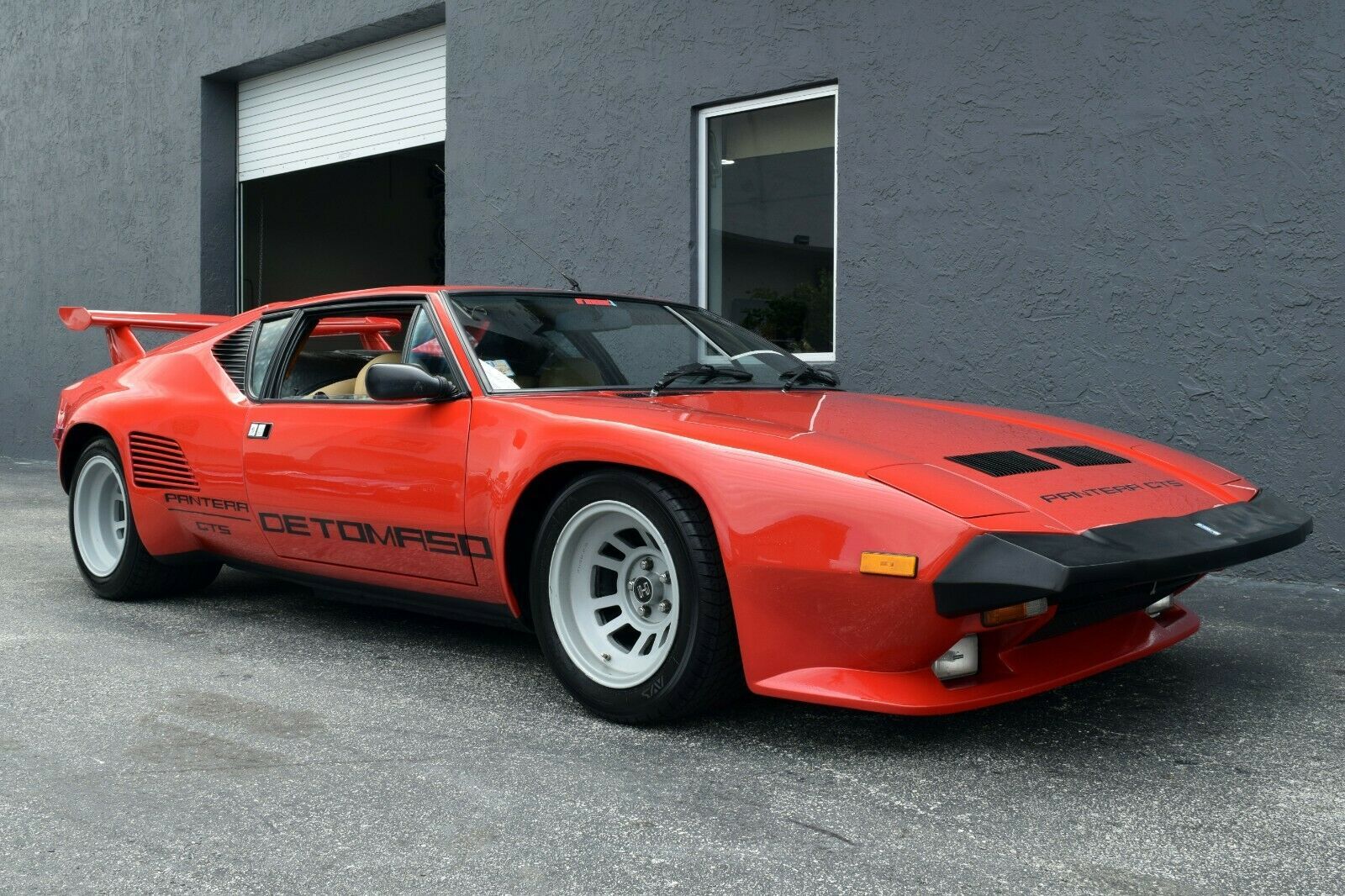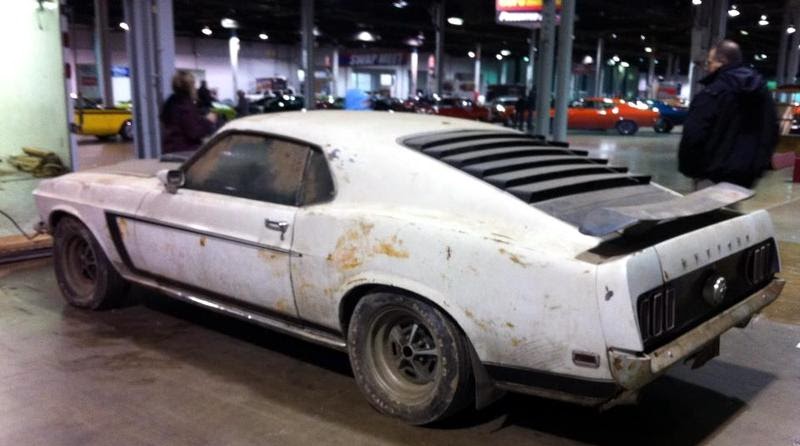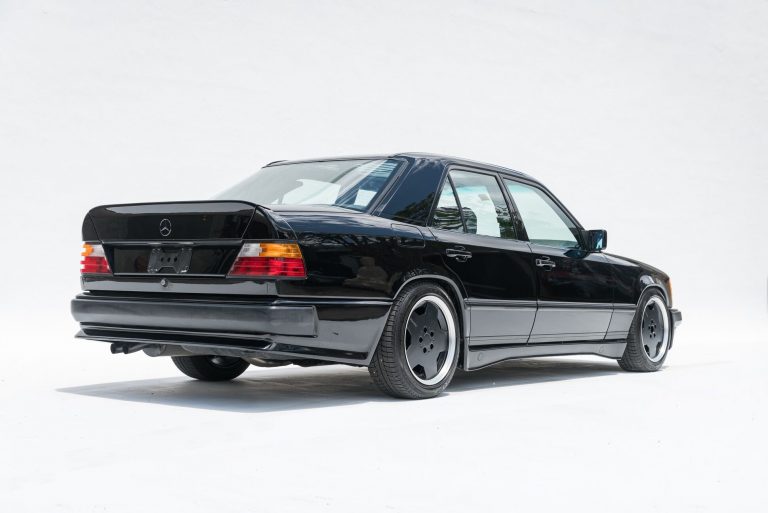De Tomaso Pantera – History and Specs

Meet Austin
Austin has been a muscle car enthusiast since an early age with his Dad having a collection including a 1965 Mustang, 1968 Mercury Cougar, and a 1969 Mustang Mach 1 among many others. Austin received a technical writing degree from University of Colorado Denver with the intentions of becoming an automotive journalist. His automotive knowledge, enthusiasm, and hands on experience allow him to craft detailed, accurate, and high-quality articles for the passionate Muscle Car Club audience.
If you’ve heard of the De Tomaso Pantera, chances are that you know a thing or two about cars. Since the Pantera didn’t receive the vapid bedroom poster fanfare of the Lamborghini Countach or Ferrari Daytona, the Italian-designed, Ford-powered exotic flew under the radar of almost everyone in the early 1970s. Even today, it takes a special kind of aficionado to know anything beyond the name De Tomaso.
With that being said, the potential and promise of the Pantera was tough to argue with in 1971. In the early 1970s, a Lamborghini Countach LP400 cost $52,000. In light of that fact, the Pantera was a steal, with a starting MSRP of only $9,995. Despite being a quarter of the price, the Pantera was more than half as good-looking and almost entirely as powerful. Designed by Italian automobile design firm Carrozzeria Ghia and with a Ford Cleveland V8 under its rear engine cover, the Pantera was a seemingly good blend of the strengths of two nations.
While the Pantera certainly had some redeeming characteristics, its difficult quirks would eventually outweigh many of its positives. Over the De Tomaso Pantera’s 20-year production run, only 7,260 were ever produced due to the painstaking handmade nature of each car. While that certainly elevated the Pantera’s exotic cool factor, it also led to inconsistencies and design faults in the early years. Eventually, with the Pantera L, Pantera GTS, and Pantera GT5, many of the initial kinks were ironed out.
De Tomaso Pantera Origin
For a company that is relatively unknown to less-informed car enthusiast circles, De Tomaso certainly has an interesting history. De Tomaso was founded by an Argentinian Formula One driver named Alejandro de Tomaso who would later become involved in the business side of racing and racecar development. Early in the De Tomaso saga, the company focused on developing racecars for other teams and manufacturers.
De Tomaso would then expand to build their own racecars and production cars, with the first being the Vallelunga. It wasn’t until the introduction of the De Tomaso Mangusta that the company would truly be put on the map. The Mangusta originated out of a failed development deal with Carroll Shelby which fell through, leaving De Tomaso with an incomplete chassis. De Tomaso recruited the Carrozzeria Ghia design firm to finish the design, a company that Alejandro De Tomaso would gain control over in the years to come. The Mangusta used a Ford HiPo 289 in its initial form and later a Ford 302 V8. 401 De Tomaso Mangustas were built, receiving moderate levels of praise.
While the Mangusta helped establish the De Tomaso name in the sports car world and strengthened connections with Ford and Ghia design, it wasn’t a wildly successful car in its own right. However, it would establish a foothold that De Tomaso used to his advantage with the Pantera. The Pantera was released in 1971 with a Ferrari-challenging design from the Ghia design firm and a 351 Ford Cleveland V8 engine. Alejandro De Tomaso was able to leverage his history with Ford to work out a deal with Lee Iacocca, leaving North American sales to Ford.
1971 De Tomaso Pantera
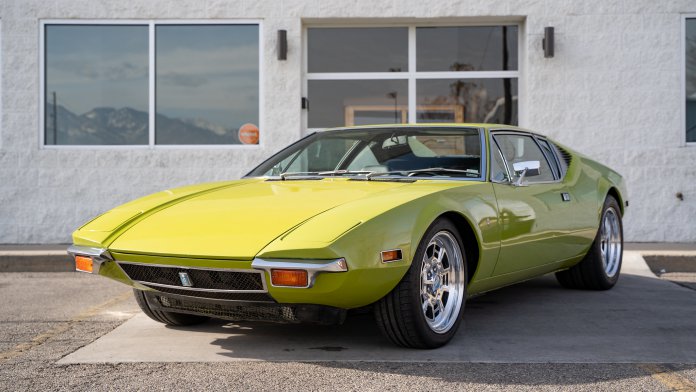
The first De Tomaso Panteras hit dealerships in 1971, both in America and abroad. Due to the fact that the Pantera was manufactured in Modena, Italy, all of the American cars were simply European imports sitting in Lincoln-Mercury showrooms. As such, they all used the same Ford 351 Cleveland V8 and featured an identical body design. Well, “identical” can be interpreted loosely here. Misaligned panels and uneven panel gaps made each car unique due to their handmade construction. Quality would improve later in the year due to modifications to the production process by Ford.
Around 1,000 De Tomaso Panteras made it to American shores in 1971, seeing decent sales numbers in the first year. 300 1971 De Tomaso Panteras were sold in Europe as well.
1972 De Tomaso Pantera
1972 saw some notable changes to the Pantera which refined it a bit more. The most significant changes made to the 1972 Pantera came in the form of engine modifications. While the Pantera still utilized the Ford 351 Cleveland V8, it was updated to feature a four-bolt main block and a lower 8.6:1 compression ratio. This would be a sign of things to come for the Pantera, as stricter US emission rules would start to become a serious issue for the company.
Despite the 351 Cleveland’s lower compression, it received the camshaft from the 428 Cobra Jet, which bumped horsepower in an attempt to compensate. The Pantera also received factory headers to help improve exhaust flow and engine breathability.
1972-1974 De Tomaso Pantera L “Lusso”
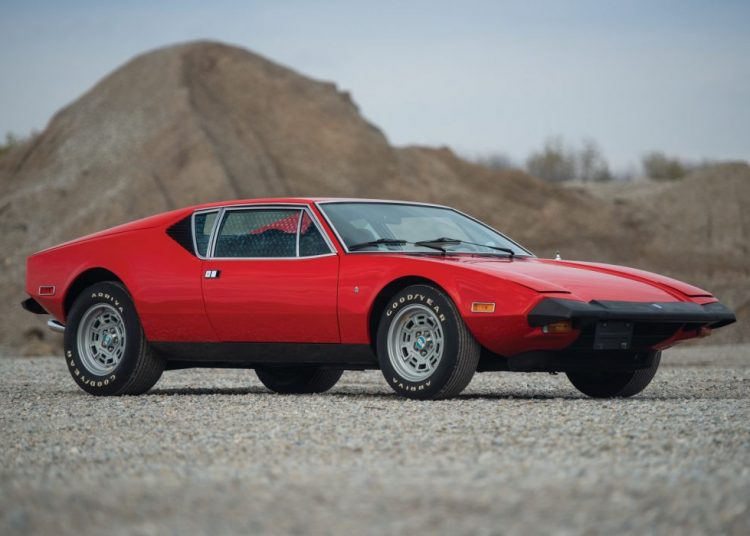
In addition to the standard Pantera, De Tomaso added the Pantera L to the product line. The Pantera “Lusso” served as a more refined version of the Pantera chassis. The new model fixed many of the issues that early customers complained about. Chief amongst the concerns was the lack of overall finish as far as the body was concerned. The new De Tomaso Pantera L was also forced to abide by stricter American safety regulations. That ultimately necessitated new front and rear bumpers for U.S. spec cars.
While the looks of the Pantera Lusso are certainly contested, De Tomaso truly had no choice but to implement the black rubberized eyesores. Despite their ugliness, the new bumpers served a purpose, reducing front-end lift over the previous design. The Pantera L would also feature interior improvements and quality of life improvements like upgraded A/C. As a result of this refinement, the De Tomaso Pantera L beat out the likes of Ferrari and Lamborghini to win Road Test Magazine’s 1973 Car of the Year award.
1973-1985 De Tomaso Pantera GTS
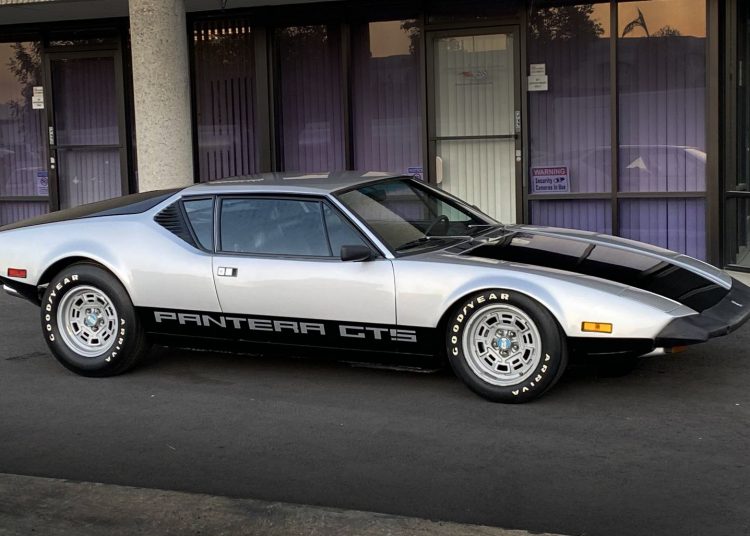
After the base Pantera had been in production for a couple of years, De Tomaso decided to introduce a high-performance version of the model called the De Tomaso Pantera GTS. The GTS was designed for Group 3 racing first and foremost, receiving a number of important upgrades. The Ford 351 Cleveland compression would be raised to 11.0:1 and would also be given better Holley carbs. As a result of the updated Ford 351 Cleveland, the GTS would produce 345 horsepower. That was 15 more ponies than the standard Pantera. The GTS also had a less restrictive exhaust system and an aluminum intake manifold.
In addition to the added power, the De Tomaso Pantera GTS also featured key handling improvements. Beyond the inclusion of wider 285/50VR15 rear tires, the Pantera GTS also employed ventilated brake discs and a shorter ratio steering rack. Many De Tomaso Pantera GTS were eventually converted into Group 3 spec cars. While the American market eventually received the GTS briefly in 1974, the American spec car would not feature any of the performance modifications that the European model received. Instead, it was more of an appearance package featuring slight interior tweaks and matte black trim accents.
1973 Oil Crisis Effect on the De Tomaso Pantera
1973 and 1974 were not good years to be in the high-cylinder count, high-displacement, supercar business. The 1973 oil crisis impacted almost every nation around the globe and hit the American market extremely hard. As a result, the demand for gas-thirsty high-performance vehicles became almost nonexistent in the following years.
In light of the oil crisis and increasingly strict emissions laws in the US, the De Tomaso Pantera seemed to be doomed from a sales and performance standpoint. That theory was validated in 1974, when Ford began distancing themselves from De Tomaso and ended importation of the Pantera just a year later. Ford themselves struggled to abide by emissions regulations as well, ending production of the famed 351 Cleveland V8 in 1975.
It seemed like the De Tomaso brand, and Pantera along with it, were doomed from that point forward. But they forged on, coming up with solutions to their serious problems. While Ford discontinued the 351 Cleveland in the US, they continued to produce the engine for the Australian market. De Tomaso began sourcing their engines from the foreign supply, sustaining Pantera production. Between 1975 and 1980, the Pantera was sold internationally, barring the US. Despite the odds, the Pantera lived to see another day, with further variants being released from 1980 onwards.
1980 – 1985 De Tomaso Pantera GT5
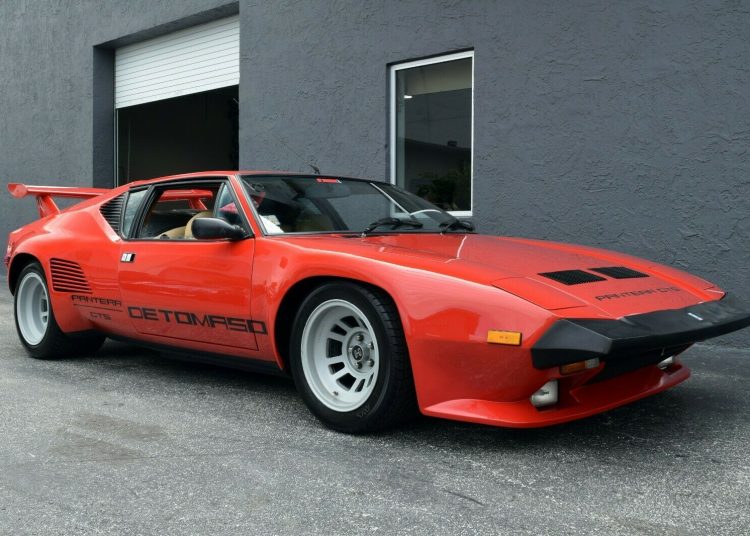
There was a significant gap in time between the release of the Pantera GTS and the next variant, the GT5. In 1980, De Tomaso unveiled the Pantera GT5, a race-derived, highly aerodynamic version of the Pantera. In a time of increasing aerodynamic evolution, De Tomaso engineers equipped the GT5 with “ground effect” body additions.
The massive rear wing immediately jumped out as a key point of the refresh, as did the front splitter. The Pantera GT5 was also significantly wider than the standard narrowbody version thanks to huge fiberglass wheel arches. The wheel arches were needed to house the absolutely massive 345/35R15 rear tires. New ventilated brake discs helped reduce brake fade on the Pantera GT5 during track driving.
Post-1975, the Australian-sourced Ford 351 Cleveland V8s were sent to Switzerland to be tuned. The resulting powerplant pumped out 355 horsepower, catapulting the Pantera to 60 mph in 5.5 seconds. All Pantera models used the Swiss-tuned 351 Cleveland until even the foreign supply ran out. Eventually, De Tomaso was forced to switch to the Ford 351 Windsor engine in 1990.
In 1984, the Pantera GT5 was slowly phased out in favor of the newer Pantera GT5-S model. Despite being its own separate Pantera model, the GT5-S really only received aesthetic modifications. That isn’t to say that the body update wasn’t extensive. The GT5-S featured new one-piece steel widebody wheel arches, an updated front end, and new side air intakes. The Pantera GT5-S also received an interior update that improved the air conditioning and restyled the console layout.
Both the Pantera GT5 and GT5-S are rare beasts with only 252 Pantera GT5s and 183 Pantera GT5-S ever built. The decreased production numbers are the result of the Pantera being largely hand built in the late 1980s.
1990-1993 De Tomaso Pantera 90 (Si)
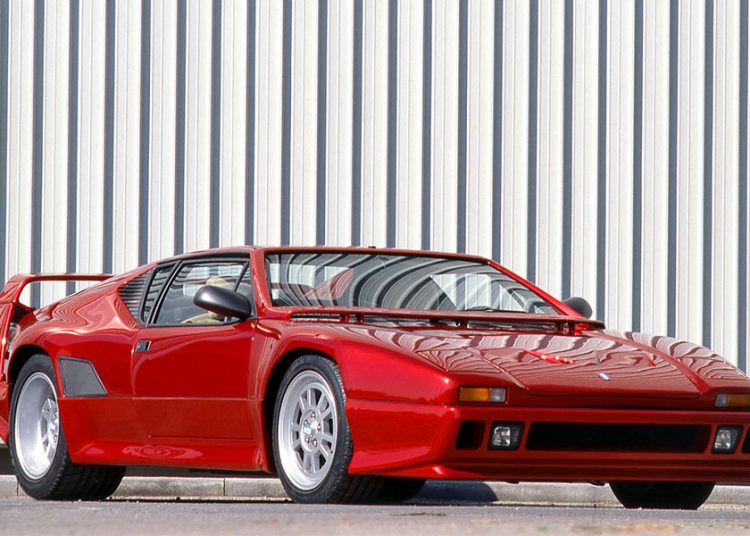
The Pantera model lived a long life spanning multiple decades and undergoing multiple design and performance changes. In 1991, the Pantera 90 was released, ending an era for De Tomaso as it wrapped up the Pantera saga. The Pantera 90 was a good sendoff for the model, being the most technically and aerodynamically advanced version.
For the Pantera 90, De Tomaso aimed to revolutionize the Pantera before its discontinuation. Based on the GT5-S, the Pantera 90 featured an all-new exterior design. For that task, De Tomaso recruited Marcello Gandini, the famed automobile designer responsible for the Lamborghini Miura and Diablo. The new design featured a massive rear wing reminiscent of the Ferrari F40. It also featured new long and sweeping body lines.
Beyond the design differences between the GT5-S and the Pantera 90, the latter also featured a number of significant performance-related upgrades. The most notable upgrade was De Tomaso’s switch to a tubular chassis in favor of a monocoque. This significantly reduced the Pantera 90s overall weight while also adding rigidity. Other notable upgrades include improved suspension, ventilated Brembo brakes, and Michelin performance tires.
The Pantera 90 also received a new engine, this time the Ford 302 small block. After Ford discontinued the 351 Cleveland internationally, De Tomaso was forced to switch. Despite being a more modern, direct port fuel-injected, advanced EMS-controlled engine, it only produced 255 horsepower. That is 100 less horsepower than the earlier GT5-S model.
De Tomaso Pantera Racing History
With a background in Formula One and experience working on and developing racecars, it’s no surprise that Alejandro De Tomaso would want the Pantera to go racing. While the Pantera isn’t considered a racecar by any means, it did compete in race trim in both Group 3 and Group 4. While multiple Panteras would compete in multiple events, reliability and fragility would be extreme enough for De Tomaso to stop racing.
Due to homologation rules to race in Group 3, De Tomaso was required to manufacture at least 1,000 production models that shared the same chassis and a majority of components overall. The Group 3 Pantera was given a few handling upgrades including lighter wheels, adjustable suspension, and racing brakes. On the powertrain front, the Pantera GTS Group 3 was given a more aggressive camshaft, a Holley 4-barrel carb, and a displacement increase to 5.8L.
The Group 4 version of the Pantera was even more extreme, building off of the Group 3 design. The Group 4 Pantera featured many of the same performance upgrades including adjustable suspension and larger wheels. Group 4 regulations were a bit less strict on the amount that the factory model could be changed. This resulted in major functional-aesthetic changes including aluminum body panels and flared wheel arches. Ford refused to supply De Tomaso engines for their racing endeavors, driving the company to source engines from Bud Moore. While those engines were high-performance versions of the Ford 351 Cleveland, they would be the source of major reliability issues.
Despite entering into multiple races and showing promise in the beginning stages, the Pantera’s race performance was hampered by engine reliability.
De Tomaso Pantera Common Problems and Reliability Issues
The De Tomaso Pantera was always marketed as an Italian exotic with an American heart. With that reputation, many Pantera buyers expected reliable performance. Unfortunately, that often wasn’t the case with the Pantera, especially in the earlier years.
Surprisingly, many of the Pantera’s most significant issues arise from its Ford 351 cu.in. V8. The Pantera’s design – with the engine mounted directly behind the driver – had a reputation of boiling any occupant alive. Early Panteras had very little in the way of heat shielding, resulting in excessive cockpit heat. Beyond just the cockpit heat, the Cleveland itself was also extremely prone to overheating. That can be attributed to an under-engineered cooling system for the mid-engined Pantera.
Another system that suffered from poor Italian engineering was the Pantera’s electrical system. Many Panteras featured electrical systems specific to an individual chassis, making it hard for Ford mechanics to work on them with any consistency. Electrical gremlins plagued the Pantera in its early stages, with shorts and improperly functioning interior elements being commonplace for most Pantera drivers.
Luckily, most of the common issues that came to define the Pantera in earlier years were ironed out in later stages of development. In fact, it was really only the 1971 Pantera and models released before the middle of 1972 that were truly affected. With the introduction of the Pantera Lusso, Ford stepped in to make sure that the deliverable product was up to their standards. They were, after all, in charge of De Tomaso’s sales and reputation in the US, so it was in their best interest to have happy customers.
Pantera Summary and Legacy
De Tomaso presented a very promising prospect to the automotive world with the Pantera. Building off of the company’s prior success working with Ford in the late 60s, it was seemingly destined for immense success. With classic Italian bodywork, an American powerhouse mounted in a mid-engined chassis, and a base MSRP that was half, if not a quarter of the competition, the Pantera was the perfect recipe in many enthusiasts’ eyes. With heavy involvement from Ford in the early years, De Tomaso also had the backing of an American automotive titan.
Throughout the De Tomaso Pantera’s 20-year run, there were multiple different iterations, each a little better than the last. While the earlier cars were fraught with quality control issues and unforeseen reliability problems, the issues really illustrated that the Pantera was a largely hand-built car, which some appreciated and others despised. With the introduction of the Pantera L and GTS, the model was refined to a much higher standard.
As an avid racer, Alejandro De Tomaso always had racetrack ambitions for the Pantera. The Pantera GTS would serve as the main basis for the Pantera Group 3 and Group 4 cars. While the Pantera wasn’t wildly successful in either series, primarily due to engine and brake reliability issues, the Pantera did instill fear in the competition.
Despite many hurdles along the way, the Pantera persevered. With the 1973 oil crisis in combination with Ford discontinuing the 351 Cleveland V8 in 1975, many other companies would have pulled the plug on a car like the Pantera. Not De Tomaso, though. Despite the trying times, De Tomaso was able to find unique solutions for unique problems, allowing the Pantera name to carry into the 1990s.

